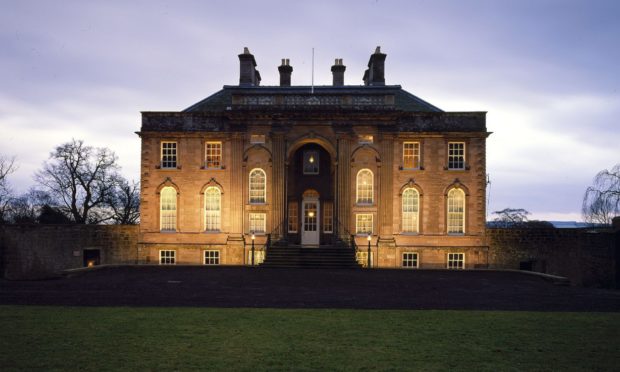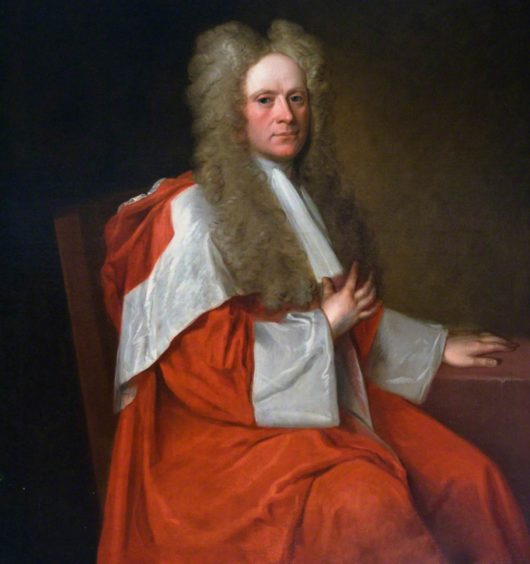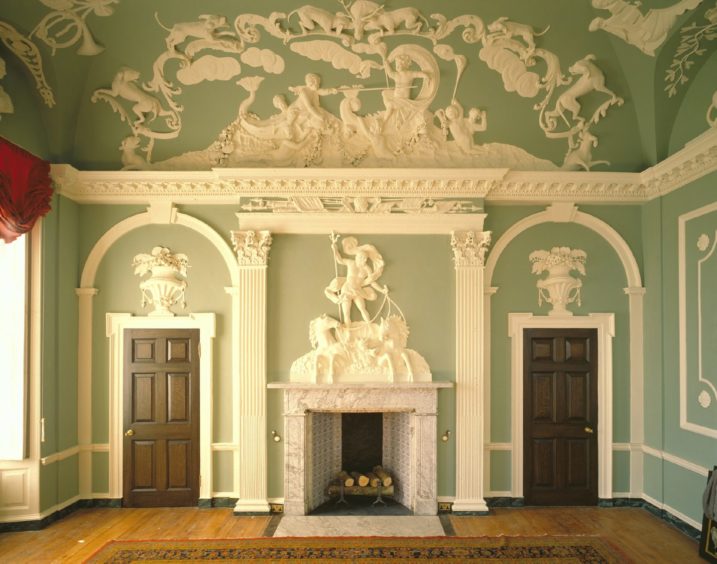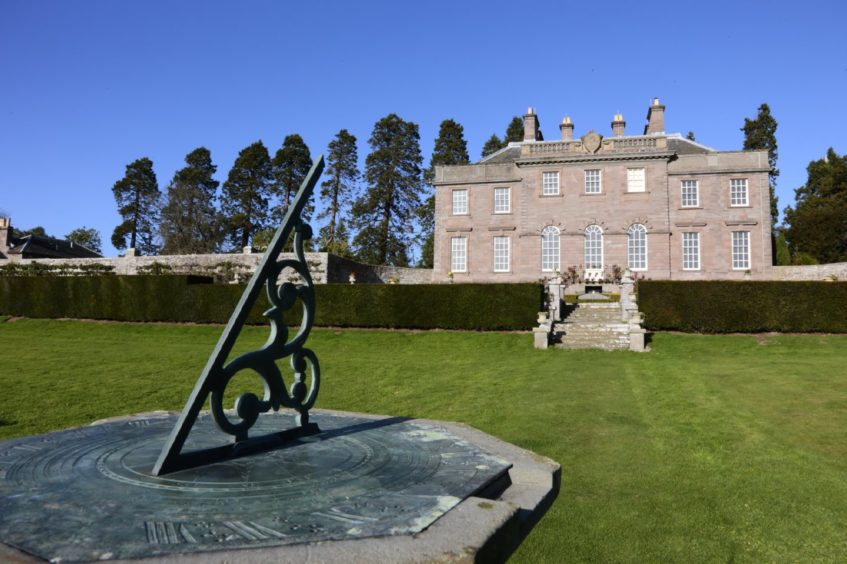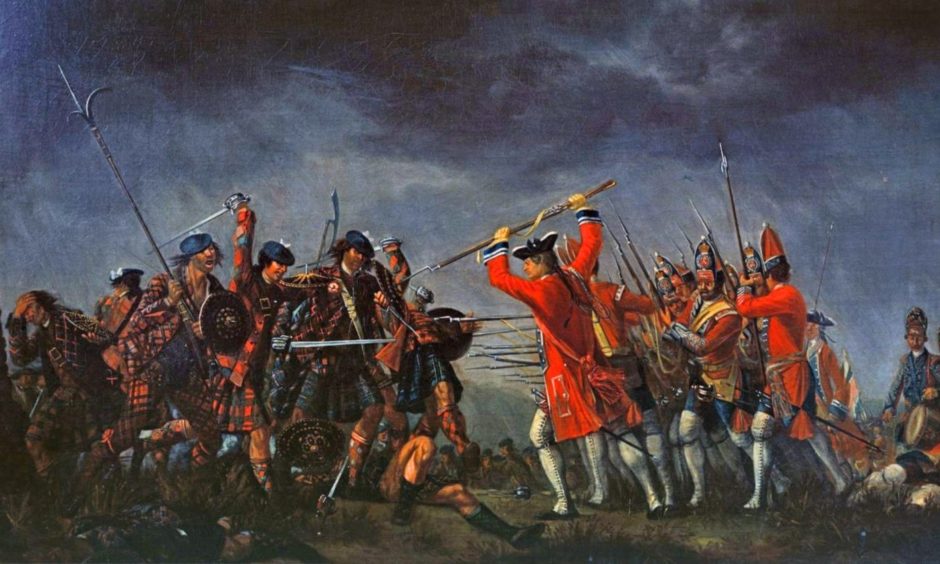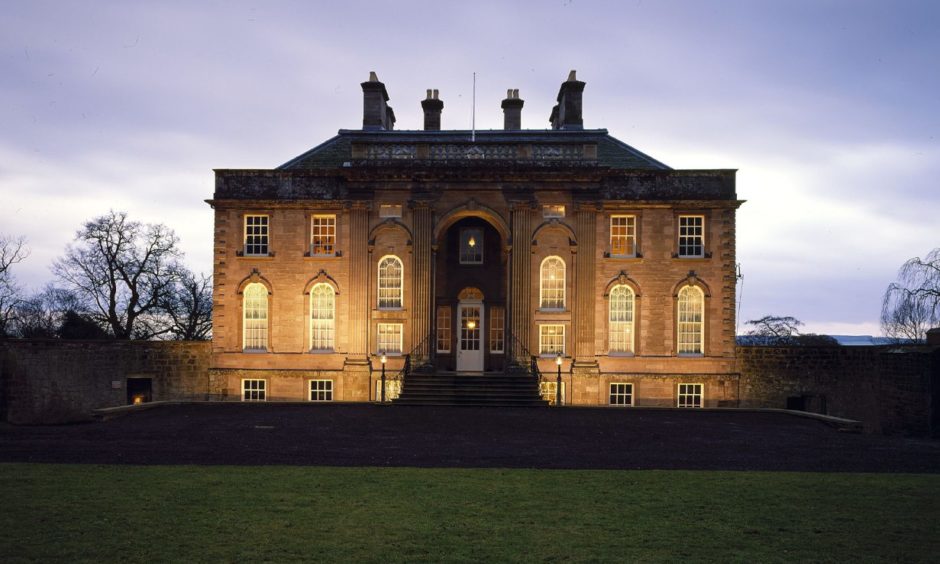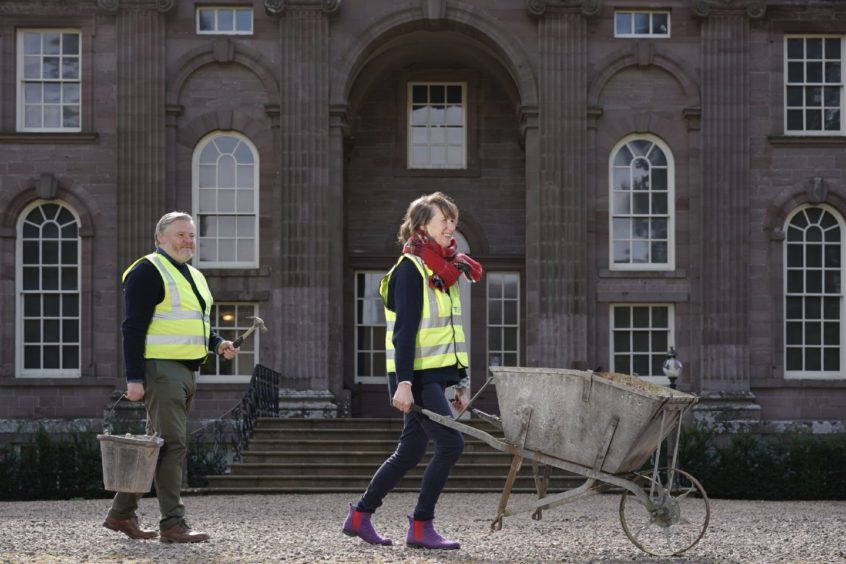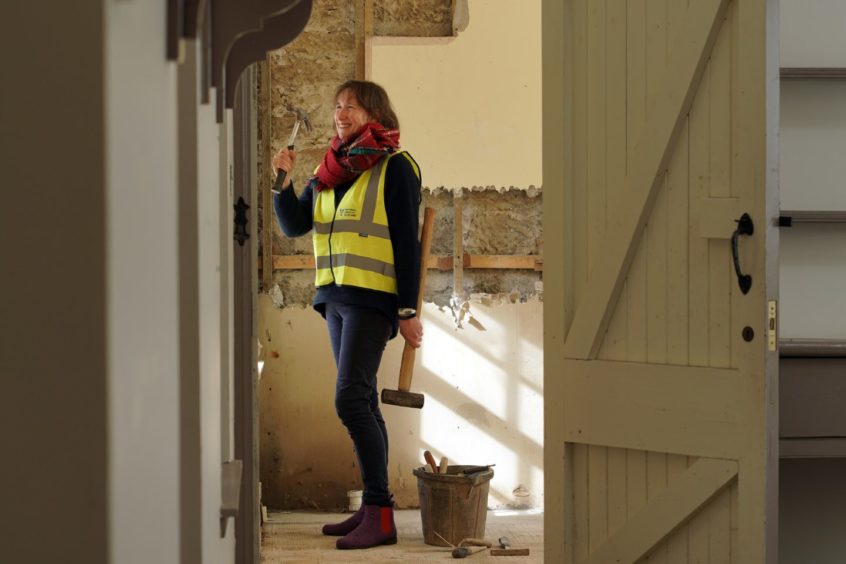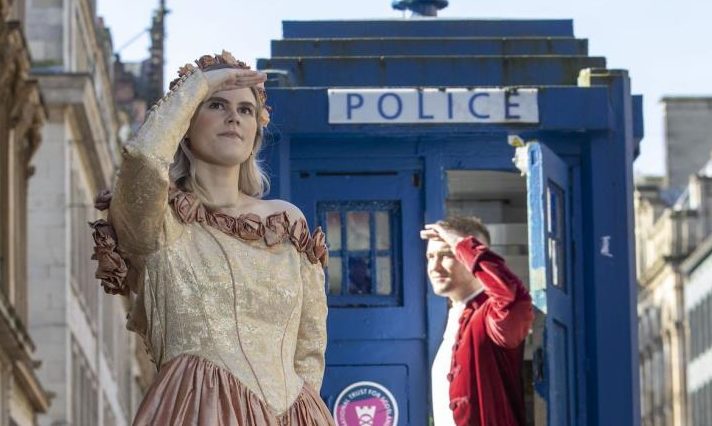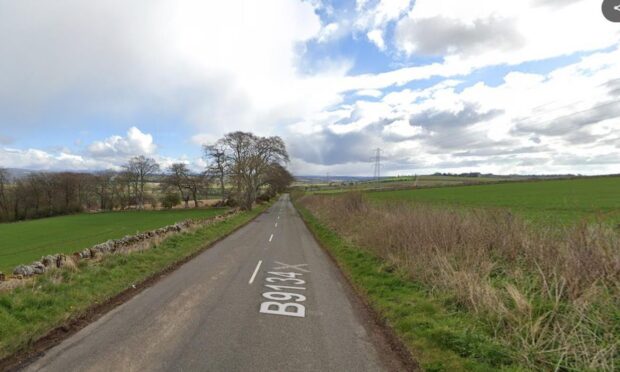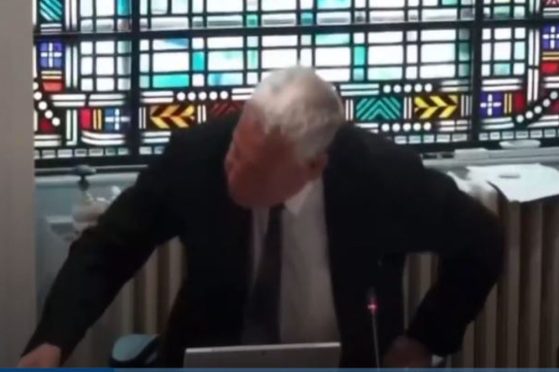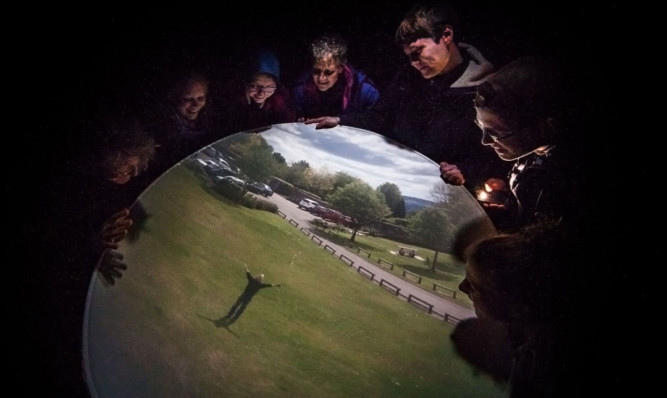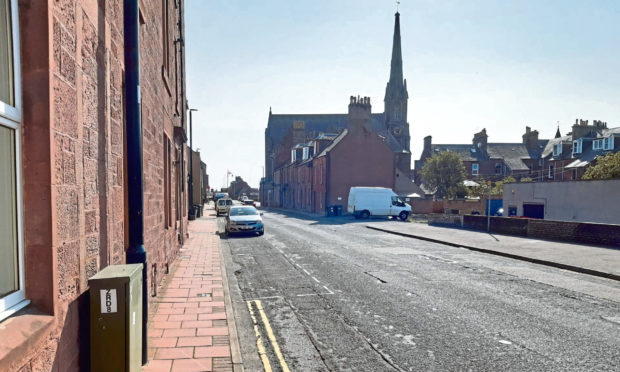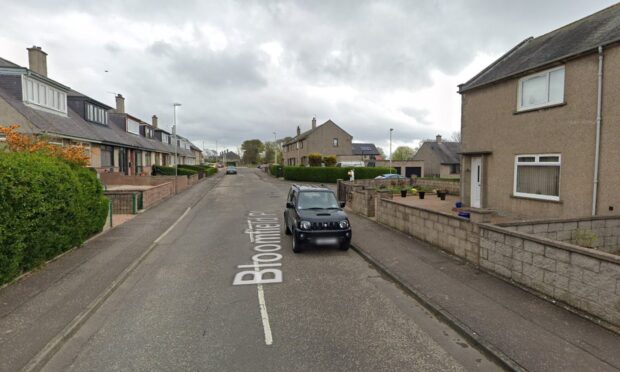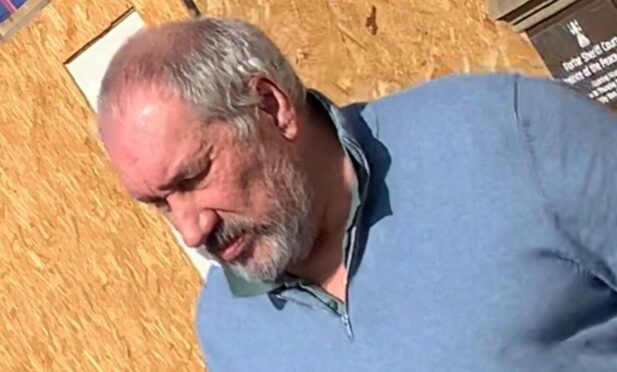House of Dun near Montrose has always been something of a hidden gem. But does it also hide centuries-old secrets of Jacobite symbolism? Michael Alexander found out more.
Proud and serious and draped in vast scarlet robes, David Erskine, later titled Lord Dun, looks every inch the Court of Session judge and parliamentary commissioner who built his reputation and wealth through the 18th century Hanoverian regime.
But does the portrait belie the fact that Erskine was a Jacobite sympathiser hidden in plain sight from the very regime he wished to overthrow?
Jason Robertson, National Trust for Scotland visitor services manager at the House of Dun near Montrose thinks so.
In fact, he believes the closer anyone looks at the House of Dun – which was Lord Dun’s country home – the more evidence there is to identify Erskine’s support for the ‘Young Pretender’ to the throne of Scotland, Bonnie Prince Charlie.
At a time when public admission of his Jacobite support could almost certainly have led to death, it’s believed Lord Dun expressed his true political leanings through the elaborate plasterworks of his Angus retreat.
Now, as House of Dun looks forward to re-opening fully from mid-June when Covid-19 restrictions allow, it’s an aspect of history that the NTS expects to be of greater public interest thanks to the influence of Jacobite-era show Outlander.
“It’s one of these really weird things,” says Mr Robertson.
“They’ve got this amazing plaster work that took four years to complete.
“It’s pretty obvious when you look at it that he was a very strong sympathiser of the Jacobite movement. You couldn’t get more obvious!
“It’s in such plain sight. There’s no subtlety in it when I look at it now, knowing what the symbols were. But because of the position he held, it was something he would have had to keep quiet.”
House of Dun – built with extravagance
Designed with Georgian pride and baroque extravagance by renowned architect William Adam, House of Dun is every bit the perfect 18th-century laird’s home.
Completed in 1743, it took 13 years to complete and the precision shows in the fine details.
Joseph Enzer’s plasterwork in the saloon is masterful – classical tableaux and family emblems rise thickly from the walls and ceilings with filigree flourishes.
Throughout the house, hand-stitched woolwork and embroideries by Lady Augusta FitzClarence, daughter of William IV and actress Dorothy Jordan, are equally impressive.
Downstairs in the kitchen, visitors can see how the house was at the forefront of technology, with a labour-saving clockwork spit to make work easier for the cook and her staff.
However, with the recent passing of the 275th anniversary of the Battle of Culloden, which brought to an end the final Jacobite rising at Culloden Moor on April 16, 1746, there has been a renewed focus on the hidden Jacobite symbolism within the House of Dun.
Mr Robertson explains, for example, that the drawing room at the Georgian Palladian-style mansion, bears an elaborate series of plasterwork that is riddled with cunning double speak over his allegiances.
The displays could be interpreted differently depending on who may have been in the room with the judge.
All around this room, Erskine is making a statement about his wealth.
But he is also making a statement, depending on who is sitting in the room, on his political loyalties.
The most obvious Jacobite symbols are the white roses along the rear of the drawing room.
But equally, such nuances could be explained away given the room’s stunning views over the property’s formal gardens and rose beds.
“He was a distant cousin of the Earl of Mar – a staunch Jacobite who declared the uprising of 1715,” says Mr Robertson.
“From that point of view he had a family connection with that and his sympathies are likely to have been influenced by him.”
Earl of Mar declared Charles Edward Stuart – the son of deposed James II and VII – as King of Scotland after he gathered a hunting party of around 800 men in Glen Quoich near Braemar.
However, Mr Robertson says there’s not much subtlety to anything else.
Hidden symbolism
He explains that with hunting banned to prevent gatherings of men, the hunting scenes depicted on the walls of the drawing room could be a “cock-a-snook” to the establishment, which a Jacobite would spot immediately.
On the other hand, the lord could have claimed in all innocence that it was only a hunting scene.
Other symbols believed to have Jacobite connotations include Poseidon on his sea chariot being welcomed by a water nymph – was this symbolising the arrival of Charles Edward Stuart from across the water?
The Mars, God of War, relief in the drawing room can also be viewed as having a Jacobite influence or a Hanoverian one.
On the one hand there is the depiction of the Union Flag and Mars suppressing the Scottish Crown and the Lion of Scotland. On the other, the Crown of England and the Lion of England is being suppressed.
Also visible is the Fleur de Lys, representing France, and a thistle with a Crown on top of it.
Who was David Erskine Lord Dun?
Born in 1670, David Erskine, Lord Dun, the 13th Laird of Dun, was a Scottish advocate, judge and commissioner to parliament.
The son of David Erskine of Dun, near Montrose, he studied at the universities of St Andrews and Paris.
He became a member of the Faculty of Advocates on November 19 1698, and soon rose to eminence.
He represented Forfarshire at the convention of estates in 1689 and in the old Scottish Parliaments of 1690, 1691, 1693, 1695 and 1696, and opposed the union.
In November 1710 he took his seat as an ordinary lord by the title of Lord Dun, and on April 13 1714 was also appointed a lord of justiciary.
He resigned his justiciary gown in 1744 and his office as an ordinary lord in 1753.
He lived to a good age – dying on May 26 1758.
Given his leanings, however, it seems remarkable, that Erskine came away unscathed during the 1715 and 1745 uprisings and their aftermath.
Angus hotbed for Jacobite sympathies
It is well documented that Angus was a hot bed of Jacobite sympathisers.
However, it seems that Erskine’s survival was evidence of his reluctance to bite the Hanoverian hand that was feeding him.
“The estate of Dun had been the family home of the Erskine family since round about the 14th century,” explains Mr Robertson.
“House of Dun was the third home within the grounds. There was the original castle, the tower house castle and then the house we’ve got now – completed in 1743.
“It was designed by William Adam – very famous at that point as an architect who’s sons went on to be architects as well, involved in things like Culzean Castle.
“Looking back, Erskine would have had to try to keep his beliefs about Jacobites, almost secret at that point. A lot of families who were found to be sympathisers were asset stripped and taken from their place in society because they were troublemakers. He managed to dodge that.
“If it had become public, it definitely would have made it difficult for him to be a judge and a parliamentary commissioner within the regime he was technically in the background of and almost rebelling against.”
Asset for 21st century tourism
Mr Robertson says that from the NTS perspective, they are fortunate that House of Dun remained the home for generations of Erskines for centuries.
This meant that by the time the NTS took it over in 1980, it hadn’t been “stripped” and the “constant story line” of the Erskine family remained.
A few years ago VisitScotland created a Jacobite trail which included House of Dun, and this helped attract visitors.
The so-called ‘Outlander effect’ had also had an impact and it was hoped this might pick up again once tourism is able to resume properly.
“There was definitely interest in the Outlander connection at the start of lockdown,” adds Mr Robertson.
“We were film scouted as a location. It’s a stunning building. We definitely have that. And I think because we tell the story, we have the unbroken line of a family starting with David Erskine and everyone after that all the way through.
“We are buzzing to get back open again.”
House of Dun is currently undergoing a major ‘re-imagining’ and is due to open to the public in June with costumed story-telling one of the new attractions at the property which will also be the permanent home of the Angus Folk Museum.
The NTS recently advertised for people to ‘travel back in time’ to the Victorian era and help bring to life the stories of the mansion.
Five staff members are being recruited to take on the roles of three real-life former residents of the mansion: aristocrat Violet Augusta Mary Frederica Kennedy-Erskine, house cook Isabella Peddie and William Young overseer of the estate.
No acting experience is necessary. Award-winning theatre director Al Seed is collaborating with the trust to develop the stories that the characters will tell using innovative theatrical techniques including specially commissioned costumes and audio installations.
The garments created by costume designer Zephyr Liddell and the audio installations from sound artist Guy Veale will help create a rich experience for visitors.
